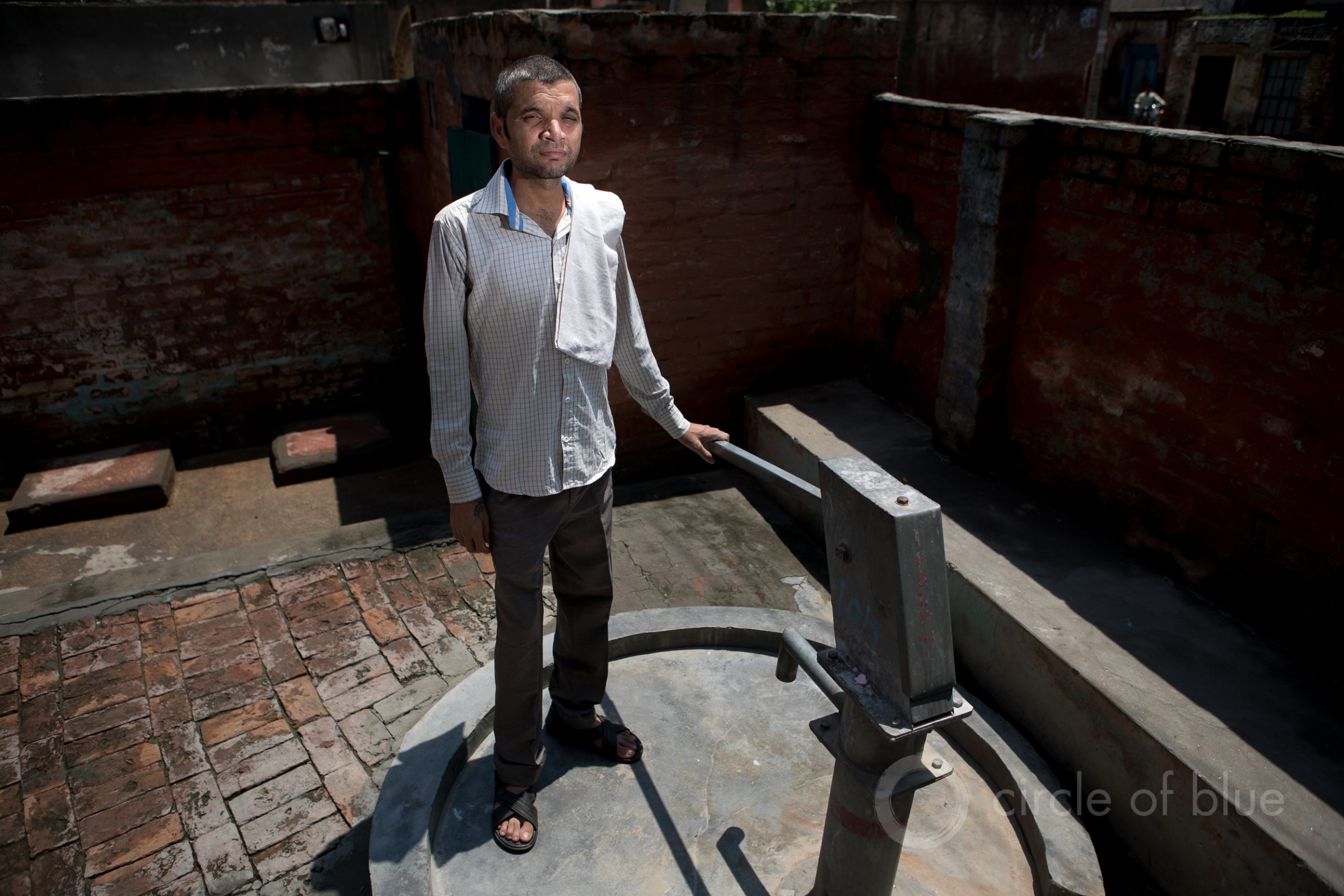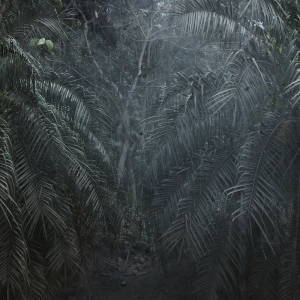Millions of wells are only a few meters below the water table, study finds.

Wells, including this one, are going dry in Doula, a village 55 kilometers (34 miles) northeast of New Delhi. Doula and many regions in India are facing a groundwater emergency triggered in part by thirsty industries, intensely irrigated agriculture, and hydrological mismanagement. © J. Carl Ganter / Circle of Blue
Key Takeaways
- A new study found that wells serving many of the world’s rural households, farms, and factories are at risk of running dry if groundwater levels in their areas continue to decline.
- 39 million wells, from 40 countries that are home to three billion people and represent half of global groundwater pumping, between 6 percent and 20 percent are no more than five meters below the top of the water table.
- Drilling a deeper well or tapping other water sources is often an inadequate solution and raises questions of equity for financially burdened households.
By Brett Walton, Circle of Blue — April 22, 2021
[bctt tweet=”“(The study) implies that millions of wells are at risk of running dry if water tables decline just a few meters.” — Scott Jasechko of the University of California, Santa Barbara. ” username=”circleofblue”]
Wells serving many of the world’s rural households, farms, and factories are at risk of running dry if groundwater levels in their areas continue to decline.
According to a new analysis of 39 million wells, between 6 percent and 20 percent are no more than five meters below the top of the water table. The math in these scenarios is unforgiving.
“This implies that millions of wells are at risk of running dry if water tables decline just a few meters,” Scott Jasechko of the University of California, Santa Barbara, told Circle of Blue. Jasechko and co-author Debra Perrone, also of UCSB, published their peer-reviewed study online on Thursday in the journal Science.
These wells at the brink of the water table could be vulnerable to long-term groundwater declines, in addition to seasonal fluctuations, reckoned in this study at about 1 meter on average globally, though Jasechko cautioned that it was a conservative estimate.
Drilling a deeper well is often an inadequate solution, Perrone said. It might spur a race to the bottom and worsen local groundwater drawdowns. Because more electricity is needed for pumping, deeper wells increase operating costs. However, the analysis found that deeper wells are not being drilled in all areas. In some places, new wells are just as vulnerable to declining water tables.
Lifting water from greater depths also raises questions of equity, Perrone said. Not every household can afford to spend $10,000 or more on a new well. Tapping other water sources might not be feasible. When a family has no other option, they might sell the land or move.
Constructing a global groundwater well appraisal was no simple task. Jasechko and Perrone combed through 134 databases, often requiring multiple inquiries per country. Canada, for instance, keeps its groundwater records at the provincial and territorial level.
Gathered from 40 countries that are home to 3 billion people and represent half of global groundwater pumping, the data included records on well location, depth, purpose, and date of construction. Though the results describe global patterns, Jasechko said the analysis is supported by locally relevant details.
[bctt tweet=”“We’re most interested in how to use this information to inform change. To elevate groundwater to the importance it should have.” — Debra Perrone of the University of California, Santa Barbara.” username=”circleofblue”]
Jasechko and Perrone included as many countries as possible in the analysis, but they were constrained by the quality of the record keeping. India, Mexico, South Africa, Thailand, Brazil, most of Europe, and the United States were among the countries that made the cut.
“Data sets choose researchers, not the other way around,” Jasechko quipped.
All told, they spent six years on the project.
Perrone believes it was time well spent. Groundwater research that she began in the western United States extends globally. If wells are the hardware, Perrone is now assessing the software — the legal and regulatory systems — that match water supply and demand, to see what solutions are working.
“We’re most interested in how to use this information to inform change,” Perrone said. “To elevate groundwater to the importance it should have.”
Brett writes about agriculture, energy, infrastructure, and the politics and economics of water in the United States. He also writes the Federal Water Tap, Circle of Blue’s weekly digest of U.S. government water news. He is the winner of two Society of Environmental Journalists reporting awards, one of the top honors in American environmental journalism: first place for explanatory reporting for a series on septic system pollution in the United States(2016) and third place for beat reporting in a small market (2014). He received the Sierra Club’s Distinguished Service Award in 2018. Brett lives in Seattle, where he hikes the mountains and bakes pies. Contact Brett Walton





